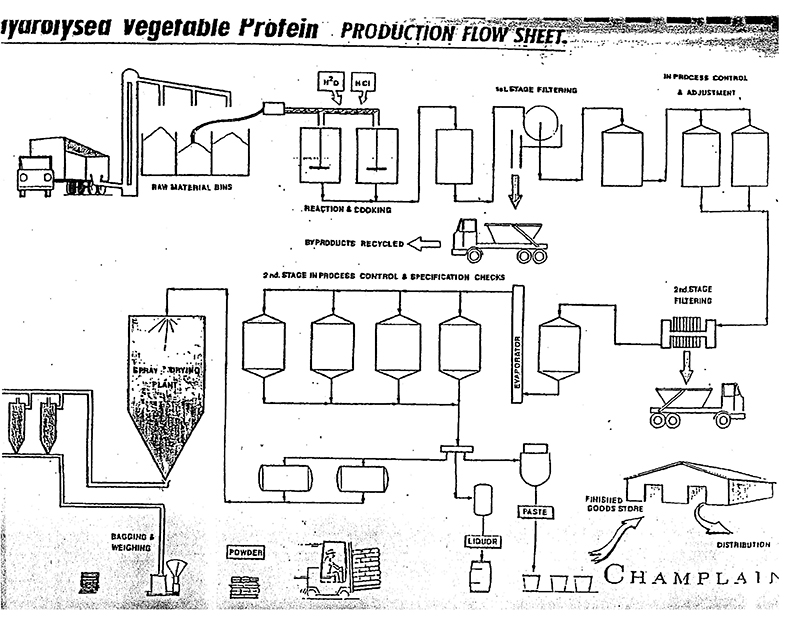The FDA doesn’t just ignore the toxicity of free glutamate. Taking their lead from the producers of monosodium glutamate (MSG), the FDA actively promotes the fiction that MSG is a harmless food additive. “Industry’s FDA,” which follows directly below, pretty much tells it all.
If you know anyone who doesn’t yet understand that the FDA works hand in glove with BIG FOOD and BIG PHARMA, make sure they read “Industry’s FDA.”
Industry’s FDA
The FDA’s cooperation with Ajinomoto to promote the use of monosodium glutamate (MSG) was first evidenced in 1969 during testimony given before the Senate Select Committee on Nutrition and Health on the safety of MSG by then FDA Commissioner Ley. Commissioner Ley testified to four studies that allegedly demonstrated the safety of MSG. It was later confirmed that two of those studies had not been completed, and the others didn’t exist.
Since that time FDA/industry cooperation has included:
Telling blatant lies about the safety of MSG, lies originating with the glutamate industry and repeated by the FDA.
Dispensing complementary information about MSG while withholding information that might be considered negative.
Officially approving study protocols for MSG-is-safe studies that used placebos known to cause the same reactions as those caused by MSG test material.
Allowing glutamate-industry propaganda to be displayed on the FDA webpage, https://www.fda.gov/food/food-additives-petitions/questions-and-answers-monosodium-glutamate-msg
Refusing to collect reports of reactions to MSG “because we know that no one reacts to MSG.”
Withholding key information from dietitians, nutritionists, consumers, and the medical community such as:
-
-
-
- The glutamate in MSG, and therefor MSG itself, is excitoxic – brain damaging.
- There is a second excitotoxic amino acid used in food. It’s the aspartic acid component of “sugar-free” or “low calorie” sweeteners with names such as aspartame, equal, and AminoSweet.
- When used in pharmaceuticals, glutamic acid is regulated as a drug. When used in food, glutamate is regulated as a food.
- When used in pharmaceuticals, the many and varied reactions following use of glutamic acid are called side effects.
- When used in food, the many and varied reactions following ingestion of glutamate-containing MSG are not acknowledged as side effects of glutamic acid, although that’s exactly what they are.
- Adverse reactions known to be caused by excitotoxic manufactured free glutamate (MfG) are many and varied, ranging from simple skin rash to anaphylactic shock. They are listed at https://www.truthinlabeling.org/recognizingadverse.html#list_adverse
- When used as a discrete ingredient in processed food, excitotoxic manufactured free glutamate (MfG) will be labeled glutamic acid, L-glutamic acid, L-glutamate, glutamate or E620.
- MfG is also found as a constituent of ingredients that contain glutamate that has been freed from protein during fermentation or other forms of processing. These include, but are not limited to, anything “hydrolyzed,” “autolyzed” or “enzyme-modified.” The list of ingredients known at this time to contain MfG can be found at https://www.truthinlabeling.org/names.html.
- Manufactured free glutamic acid (MfG) is always accompanied by unwanted by-products of manufacture – referred to as impurities. There are impurities associated with the L-glutamate in monosodium glutamate (since monosodium glutamate is manufactured), but there are no similar impurities in the intact protein found in the human body.
- The popular method for producing monosodium glutamate today calls for feeding carefully selected genetically modified bacteria on a diet that will enable the bacteria to secrete glutamic acid through their cell walls. There have been a variety of such methods used since 1957– many, if not all of which, are patented.
- Monosodium glutamate exerts its influence on receptors in the central nervous system and glutamate receptors in many peripheral tissues, including lungs, heart, and skin. It can excite – and over-excite – receptors in the brain and central nervous system, and also excite and over-excite receptor cells in the heart, kidney, lungs, ovary, testis, liver, endocrine tissues, bone, and immune system, for example.
- There may be some small amount of free glutamic acid in unprocessed, unadulterated, food, but if so, it will not cause brain damage or adverse reactions. It is conceivable, but has not been demonstrated, that the impurities in manufactured free glutamate contribute to MSG-induced brain damage and adverse reactions. In this area, as in many others, research is sorely needed.
- The studies of the 1970s demonstrating that glutamic acid causes brain lesions were so well done and so often replicated that by the 1980’s glutamic acid was being used by researchers as a tool to selectively kill brain cells. It is still used for that purpose in the laboratory.
- Monosodium glutamate stimulates glutamate receptors in the mouth and on the tongue (often referred to as taste buds by the glutamate industry). That results in producing perception of more taste in the food being eaten than would otherwise be.
It is (or was), an FDA rule to investigate the reports of life-threatening reactions to FDA regulated substances, however, such investigations have not been routinely executed.
In addition, on at least two separate occasions for which we have documentation, medical records of life-threatening reactions to MSG were altered/falsified.
The FDA has pretended to be concerned with public health, but has refused to require that processed free glutamic acid in processed foods, infant formula, enteral care products, protein powders, cosmetics, pharmaceuticals, and dietary supplements be labeled, so consumers could avoid it if they chose to do so.
In 1989, Jack Samuels and George Schwartz met with ranking members of the FDA to discuss what Samuels and Schwartz referred to as the hazards of consuming monosodium glutamate. Since Schwartz did all of the talking, Samuels entertained himself by taking minutes of the meeting. When the requested official FDA minutes of the meeting were received by Schwartz and Samuels, they found the only similarity between their copy and the FDA’s was the names of the people who had attended.
A 50-year history of FDA/glutamate-industry cooperation
The FDA makes and enforces food labeling laws, and it is the FDA that determines whether or not MSG, or any other chemical, will be approved for use in food. The FDA has been cooperating with Ajinomoto Company, Inc., members of its International Glutamate Technical Committee (IGTC) and The Glutamate Association, and with the International Hydrolyzed Protein Council since at least 1968. The bottom line of that cooperative effort as it pertains to regulation of MSG is to prevent full and clear disclosure of MSG in processed food – or any other product or drug where it may be added.
Glutamate industry involvement in FDA matters is rarely obvious. That’s what makes it so effective in preventing meaningful labeling of MSG. FDA/industry cooperation can be traced back to 1958, when “monosodium glutamate” was first deemed “safe” by the FDA.
MSG could be deemed to be safe because prior to the 1958 implementation of the Food Additives Amendment to the Federal Food, Drug, and Cosmetic Act, there had been no record of adverse reactions to monosodium glutamate. But what was known as MSG prior to 1958 was replace in 1957 by a different product also called MSG that was made using genetically modified bacteria. The FDA took no notice of the change.
It was not until 1968 that the first report of adverse reactions to monosodium glutamate was published in The New England Journal of Medicine, and not until 1969 that the first evidence that monosodium glutamate caused brain lesions and endocrine disorders in laboratory animals was published in Science.
The FDA has built and then reinforced its case for the “safety” of MSG on misleading and deceptive studies sponsored by the glutamate industry. FDA regulations require that those who manufacture food additives must provide evidence demonstrating that they are “safe.” The glutamate industry has, indeed, presented evidence, but they have falsified data — not by changing test scores or research results, but by rigging the procedures used in conducting their studies so that only after careful scrutiny could one discern that their studies were flawed to the point of being fraudulent.* Glutamate industry studies are generally methodologically inadequate, statistically unsound, and/or irrelevant to the safety/toxicity of MSG. Researchers have gone so far as to use aspartame and/or MSG in placebos to cause subjects to respond to placebos just as they would respond to monosodium glutamate test material. In addition, industry’s researchers have been known to draw conclusions that did not follow from the results of their studies.
Over the course of the last 50 years, the FDA has summarily dismissed much of the research that clearly demonstrates that MSG places humans at risk. They don’t counter it. They simply ignore it. Reports of adverse reactions to MSG grudgingly collected by its own Adverse Reactions Monitoring System have been dismissed because “they could have been caused by something else.”
The FDA has suppressed results of studies that might suggest that use of MSG places humans at risk. The FDA suppressed results of its own study that suggested that use of free glutamic acid in supplements is unsafe. In a July 1992, report to the FDA, the Federation of American Societies for Experimental Biology (FASEB) had concluded, in part, that: “…it is prudent to avoid the use of dietary supplements of L-glutamic acid by pregnant women, infants, and children…. and…by women of childbearing age and individuals with affective disorders.” (MSG is called L-glutamic acid when used in supplements.) Mention has not been made of those recommendations – not to the medical community or anywhere else.
Books have been written detailing FDA corruption. The following are examples:
Eating May Be Hazardous To Your Health – The Case Against Food Additives, by Jacqueline Verrett and Jean Carper
Health at Gunpoint: The FDA’s Silent War Against Health Freedom (Paperback), by James Gormley
The Rise Of Tyranny (Paperback), by Jonathan W. Emord
Codex Alimentarius Global Food Imperialism by Scott Tips
Inside the FDA: The Business and Politics Behind the Drugs We Take and the Food We Eat (Hardcover), by Fran Hawthorne
Stolen Harvest: The Hijacking of the Global Food Supply (Paperback), by Vandana Shiva
The Truth about the Drug Companies: How They Deceive Us and What to Do about It (Paperback), by Marcia Angell
The FDA has refused to recall foods advertised as “No MSG,” “No Added MSG,” or “No MSG Added” even though those foods contain ingredients that are sources of free glutamic acid such as hydrolyzed protein, and are, therefore, in direct violation of Section 403(a)(1) of the Federal Food, Drug, and Cosmetic Act.
FDA practice has included distributing unsolicited copies of an FDA Medical Bulletin that assures physicians that MSG is safe. Similar material has been distributed to food service people.
FDA practice has included reviewing the subject of monosodium glutamate safety favorably in “The FDA Consumer,” “Talk Papers,” “Backgrounders,” “FDA Consumer MEMO’s,” pamphlets such as “Food Additives” — FDA in Cooperation with IFIC; and sending out packets of consumer information: Consumer Information, Monosodium Glutamate (MSG).
FDA practice has been to name monosodium glutamate in the FDA’s list of safe food ingredients:
FEDERAL FOOD, DRUG, AND COSMETICS ACT Title 21 – Food and Drugs
Chapter 1 – Food and Drug Administration Department of Health and Human Services
SUBCHAPTER B — FOOD FOR HUMAN CONSUMPTION
Part 182 – Substances generally recognized as safe
Subpart A—General provisions
Sec. 182.1 Substances that are generally recognized as safe
(a) It is impracticable to list all substances that are generally recognized as safe for their intended use. However, by way of illustration, the Commissioner regards such common food ingredients as salt, pepper, vinegar, baking powder, and monosodium glutamate as safe for their intended use.
In the January-February 2003 FDA Consumer magazine, Michelle Meadows spewed out paragraphs that look like they came right off the Web pages of The Glutamate Association and the International Glutamate Information Service that give the appearance of trying to convince consumers that processed free glutamic acid is “safe” while saying nothing of merit. The article was titled, “MSG: A Common Flavor Enhancer.”
In the late 1980s, the FDA established an Adverse Reactions Monitoring system (ARMS) concerned with the retrieval, processing, and analysis of data related to adverse health effects associated with specific food products and additives. The ARMS was a passive surveillance system allegedly designed to identify specific areas for focused clinical investigations on potentially causal associations. At one time, ARMS collected (not solicited, just collected) reports of adverse reactions to aspartame, monosodium glutamate, and sulfites. But since 1998 when a lawsuit demanding full labeling of MSG was dropped, the FDA no longer accepts reports of adverse reactions following ingestion of MSG or aspartame (the two excitotoxic amino acids used in food).
When called upon to investigate charges that the behavior of the FDA was inappropriate, the FDA/HHS Office of the Inspector General made sure that the investigation would be killed by turning the investigation over to the Office of Research Integrity, which under no circumstances would have jurisdiction in this matter.
When challenged in a lawsuit over full and clear labeling of MSG (August 29, 1995), the Court considered nothing but the Administrative Record presented by the FDA. Studies that demonstrated MSG had toxic potential were not allowed as evidence because they were not submitted to the Court by the FDA as part of its Administrative Record. The Administrative record was made up of material that the FDA needed in order to win its case (refusal to label MSG), plus a smattering of material from the opposition that had no bite to it, but to which the FDA could point and say, “we looked at that.”
The FDA has distorted results of its own research to serve the propaganda needs of the glutamate industry. In a 1995 study, the FDA’s Daniels, Joe, and Diachenko misrepresented their own data about the toxicity of monosodium glutamate, also misrepresenting research findings of others (2).
In 1971, the FDA’s Lynch, Lewis, and Adkins reported that hyperglycemia along with growth suppression followed ingestion of MSG and noted that hyperglycemia did not occur when subjects were given intact protein containing a large amount of glutamate – an observation that the FDA has chosen to ignore in favor of promoting the glutamate industry line that the L-glutamate in monosodium glutamate and in the human body are identical in all ways (3).
Historically, in setting up reviews of the safety (never toxicity) of monosodium glutamate, the FDA has contracted with groups that provided consultants with strong ties to the glutamate industry, and/or structured their allegedly “independent” reviews to consider only industry-approved data.
Historically, every time concern about MSG toxicity has intensified, the FDA has called for an “independent” review of the safety of MSG and has, thereby, stalled addressing the issue of MSG toxicity.
In 1992, the FDA contracted with FASEB to do an “independent” review of the safety of MSG in food. Every aspect of that study was marked by lack of objectivity and FDA/FASEB pro-industry bias. In their Request for Proposal, for example, the FDA asked questions that could not be answered, appointed Expert Panel members (at least four of the eight members selected by FASEB) who had ties to the glutamate industry, and attempted to eliminate relevant non-industry-produced data from consideration.
Legislators who inquired about the safety of MSG at that time were routinely told that the issue was being studied.
Manufacturers who inquired about the safety of MSG were told there was a study under way.
When a draft of the FASEB final report was submitted to the FDA in September 1994, that top-secret report was shared with the glutamate industry, found unacceptable, and sent back to FASEB by the FDA for “further study” — with instructions that FASEB should include the misinformation that consumers would not react to less than 2.5 or 3 grams processed free glutamic acid taken in a single meal. This was the path designed to pave the way for calling for a labeling threshold of 3.0 grams or more processed free glutamic acid (but not less than 3.0 grams processed free glutamic acid) if in the future the glutamate industry considered it necessary to allege that all MSG in processed food was identified through food labeling.
The FDA/FASEB contract to provide “clarification” was signed February 1, 1995. The new contract provided the FDA with ammunition that they would use for refusing to identify all MSG in processed food if, in the future, they might be pressured to do so.
Everything about that contract and the way in which it was executed suggests that the FDA/FASEB report published in 1995 was undertaken in order to justify the FDA’s refusal to require that all MSG in processed food be labeled.
Specifically, the FDA asked FASEB to review data relevant to possible limitations on the use of glutamates and to review data relevant to recommendations for special labeling requirements, and/or recommended levels of use of glutamates. As if to guarantee the outcome of the FASEB report, the FDA, in the “Background Section” of its contract, referred to evidence that people react to doses of 3 grams or more MSG, but failed to refer to evidence (from the same study as well as others) that people react to doses of less than 3 grams MSG. The FDA also mentioned, in its new contract, that asthma can be “worsened” with doses of more than 2.5 grams MSG, but failed to mention that asthma can also be “worsened” with doses of less than 2.5 grams MSG, and that MSG can trigger asthma-type attacks in non-asthmatics. Finally, the FASEB study’s outcome was guaranteed by the facts that FASEB was required 1) to respond directly to questions asked by the FDA; 2) to respond only to questions asked by the FDA; and 3) to review certain data, while ignoring certain other data.
The FDA’s rejection of the FASEB September 1994 draft final report on the safety of MSG in food was not without precedent. When FASEB submitted a report on the safety of MSG to the FDA in July 1978, the FDA returned the report “for updating in light of new information on these substances presented at an international symposium in May, 1978.” The symposium in question had been sponsored by the glutamate industry, and, with rare exception, the research reported had been sponsored by them, too.
Following the 1995 release of the “independent” FASEB report, the FDA published an Advance Notice of Proposed Rulemaking which reinforced the design for labeling some processed free glutamic acid, but not all processed free glutamic acid, if the FDA was forced to label processed free glutamic acid. The point was to set the minimum for labeling at 3.0 grams processed free glutamic acid which would ensure that some, but not all, processed free glutamic acid would be labeled and that most would remain unlabeled. This was notice of a possible proposal, not an actual proposal on which the public could formally comment.
Controlling reviews of the “safety” (never “toxicity”) of MSG has not been the glutamate industry’s only strategy for proving that monosodium glutamate is a harmless food additive. Their power can be seen in the FDA’s appointment of Andrew G. Ebert, Ph.D., then Chairman of the IGTC, and Kristen McNutt, Ph.D., J.D., a spokesperson sponsored by The Glutamate Association, to the FDA Food Advisory Committee — and the FDA’s refusal to appoint a single person who might be considered a legitimate consumer advocate.
The appointment of McNutt and Ebert, and refusal to appoint a true consumer advocate, demonstrate clear cut conflict of interest. Ebert’s appointment, and the subsequent refusal to dismiss him, also demonstrate the FDA’s complicity in clear cut scientific fraud.
Why fraud? Because Ebert had distributed both test materials and material that he called placebos (allegedly inert substances that could not possibly cause a physical reaction in a person who ingested them) for use in double-blind studies designed to demonstrate that monosodium glutamate is safe. And the supposed placebos that Ebert distributed were not inert substances at all, but, known to Ebert, contained aspartame, a substance made up of aspartic acid, phenylalanine, and a methyl esther. Aspartic acid is a neurotoxic amino acid and structural analog of glutamic acid, the neurotoxic ingredient in MSG. Both aspartic acid and glutamic acid cause brain lesions, retinal deterioration, and neuroendocrine disorders in laboratory animals. In addition, the adverse reactions to aspartame on file with the FDA are the same reactions — literally the same reactions — reported to the FDA by people who are sensitive to MSG. Even the relative frequencies with which the reactions occur are the same. Could it be by other than purposeful intent that Ebert not only defiled the integrity of the placebo, but used in his placebos a substance that would not only guarantee adverse reactions in people who were exposed to amounts that exceeded their dose tolerance levels, but would precipitate the same reactions as monosodium glutamate? For more about Ebert, click here.
The face at the FDA
Michael Taylor was industry’s man at the FDA for a number of years, serving as the Deputy Commissioner there from 2010 to 2016. He came from Monsanto, producer of Glyphosate, Roundup’s active ingredient and the most widely used herbicide in the United States, and leader in creation and sales of genetically modified organisms (GMOs).
To our knowledge, Taylor has never worked directly for Ajinomoto. But Ajinomoto and Monsanto have worked closely together for years. And Taylor was there front and center on “60 Minutes” for the glutamate industry when the glutamate industry was looking for someone to testify to the safety of monosodium glutamate. Who better to testify to the safety of monosodium glutamate on CBS than someone at the FDA? For a video of the 60 Minutes program, click here.
Until it was made public that Ajinomoto’s agent-in-charge-of-research was supplying his researchers with placebos that would cause the same reactions as those caused by MSG, Andrew Ebert, Ph.D., Chairman of Ajinomoto’s International Glutamate Technical Committee was Ajinomoto’s agent-in-charge-of-research.
The big picture
You have to understand just how the game is played in order to appreciate the hold that industry has on every branch of government in this country, on a large part of the scientific community, and on the media. If MSG was ever identified on food labels, consumers might notice that MSG was possibly causing or exacerbating illness and disease and exposing that fact would cost the glutamate industry billions of dollars in lost revenues. So researchers are hired to turn out research that claims to have demonstrated the safety of MSG; physicians, “scientists,” and public relations firms are hired to fabricate stories about the safety of MSG; and the FDA, and the U.S. Department of Agriculture (USDA), and the Environmental Protection Agency (EPA) do the bidding of the rich and powerful food, drug, and cosmetic industries — pronouncing that their toxic products are “safe.” And the people we have elected to public office ignore the fact that millions of pounds of neurotoxic MSG are being fed to our children, ourselves, and the elderly, that millions of people are suffering because of it and that the use of this excitotoxic amino acid in processed food contributes exponentially to the cost of health care in this country.
It’s the same game that is currently being played by Ajinomoto over its aspartame interests. It’s the same game that is now being played by Monsanto/Bayer over Roundup, glyphosate, and GMOs. It’s the same game that’s been played for years by the cigarette industry.
The FDA is diametrically opposed to informing consumers about where MSG is hidden in food. For two decades, the glutamate industry, led by Ajinomoto Company, Inc. and the FDA, and the USDA maintained that MSG did not cause or exacerbate brain lesions or neuroendocrine disorders. Later, no longer able to deny the relationship between MSG and brain lesions, the glutamate industry, moved to the argument that brain lesions and neuroendocrine disorders can be caused by MSG, but only in laboratory animals, and that what applies to laboratory animals does not apply to humans. And the FDA and the USDA made no comment.
The animal studies were followed by carefully rigged human studies not disputed by the FDA as demonstrating the safety of MSG. And to provide a fail-safe to guard against the possibility that down the road the House or Senate might insist on transparency in MSG labeling, the glutamate industry changed its strategy for assuring that MSG would not be honestly labeled. Instead of having the FDA claim that essentially no one is sensitive to MSG, Ajinomoto and friends would agree to labeling some MSG, but not all MSG. They would agree to labeling MSG only when found in amounts that far exceeded the amounts of MSG presently found in processed food.
And if you are concerned? You, the taxpayer? You, the voter? Industry depends on the fact that most consumers will throw up their hands in frustration and disgust and do nothing. Industry also depends on the fact that they control the media. Not since 1991 when 60 Minutes did its segment on MSG (which got national coverage), has there been a negative mention about MSG in any major media outlet.
When it was demonstrated to the FDA that all of the research that had been submitted as evidence that monosodium glutamate was a harmless food additive was flawed – flawed to the point of being fraudulent* — the FDA did nothing.
MSG is all about money. Both in and out of the FDA.
References
1. Schwartz, G. In Bad Taste: The MSG Syndrome, Santa Fe, Health Press, 1988
2. Daniels, D.H., Joe, F.L. and Diachenko, G.W. (1995). Determination of free glutamic acid in a variety of foods by high-performance liquid chromatography. Food Additives and Contaminants 12:21-29.
3. Lynch, JF Jr, Lewis LM, Adkins JS. Monosodium glutamate-induced hyperglycemia in weanling rats. Fed Proc. 1971;30(2):460Abs (Abstract #1477).
* The term ‘fraud’ is generally defined in the law as an intentional misrepresentation of material existing fact made by one person to another with knowledge of its falsity and for the purpose of inducing the other person to act, and upon which the other person relies with resulting injury or damage. [Fraud may also include an omission or intentional failure to state material facts, knowledge of which would be necessary to make other statements not misleading.] Accessed on 11/4/2010 at the ‘Lectric Law Library’s Lexicon.











